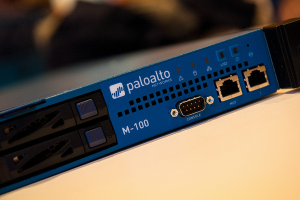FaceTime is to the Fax Machine as Skype is to EMail [WWDC]
![]() Did you hear? Apple unveiled video chat today.
Did you hear? Apple unveiled video chat today.
Apple’s iPhone marketing veep Joswiak said at the keynote that “FaceTime is going to change the way we communicate forever.”
While Cali Lewis and many other bloggers I followed during the WWDC keynote swallowed the hype hook, line and sinker, I felt my personal reaction sat somewhere closer to Joel Topolsky at Engadget: “Forever? Forever ever? Hey people using video chat over 3G all over the world — does it feel that way?”
I say that because I, and nearly one billion of my closest friends, have been using video chat for ages now, and we call it Skype (and a few million even use it on the iPhone).
The target market of the iPhone is the early adopters and Apple fanatics. These people are, if nothing else, well known to be fans of the latest, greatest and prettiest toys in technology. To say that this brings video chat to the masses is a little hyperbolic, particularly when video chat is already in the hands of one in eight of the world’s denizens with Skype.
I’ll put it another way – let’s pretend you want to have a video chat with someone right now, and you’re not sure what platform their using on their PC, or their phone, or their television. What is the easiest way to get a hold of them? Will ring them up on the phone and say “let’s hop on video chat. Do you have an iPhone?” or will you ask them if they have Skype installed?
![]() Skype, after all, is featured almost daily on Oprah’s TV show. If the most stereotypical non-techie consumer (that is to say, your mom and grandma) is being exposed to it regularly, you can be pretty certain they’ll at least have an inkling on how to get it up and running on whatever platform works for them. Skype is available on nearly every platform (desktop or mobile) out there, and in most cases allows for some form of video communication.
Skype, after all, is featured almost daily on Oprah’s TV show. If the most stereotypical non-techie consumer (that is to say, your mom and grandma) is being exposed to it regularly, you can be pretty certain they’ll at least have an inkling on how to get it up and running on whatever platform works for them. Skype is available on nearly every platform (desktop or mobile) out there, and in most cases allows for some form of video communication.
To say that video chat on the iPhone is the tech that will change the world forever would be akin to saying the fax machine will change the world forever if it were introduced to the world in 2010.
Skype is, for better or for worse, the defacto standard for IM, audio and video communication on Internet connected devices.
OK Rizzn, Mr. Wet Blanket. Is There Anything Positive You Can Say About Apple Today?
I do have something positive to say about FaceTime, even if it is in a sort of backhanded way. On Friday, I wrote a short piece that reflected an idea I’ve had germinating for some time now: the idea that our smartphones reflect not so much as a mobile computing device, but the hub for our personal computing space. As I said on Friday:
The real interesting thing here is that this is the demarkation point for the possible decline of the smartphone, and the advent of the the personal cloud. The smartphone is more and more being used as a data router with a nice interface (that’s sometimes used to make actual phonecalls). Meanwhile, you have operators like Sprint who are ever so slowly starting to morph their data plans to look more like the flat fee WiMax plans Clear provides.
The way we use our smartphones now, it’s as if it’s the focal point of our mobile computing experience. Apple, itself, though is trying to eat it’s own young by pushing more and more mobile devices at us, most of which prefer to have an always-on connection: the MacBook, the iPad, and the scads of other competing iOS devices.
That isn’t just limited to the Apple universe, though. For non Apple zealots, we generally carry around one or more of the following: a netbook, a laptop, a smartphone, perhaps a palmtop or pad device, maybe one or two process-specific devices (in my case, it’s a TwitterPeek, but it could be a mobile TV, a DVD player or an MP3 player for you). Whatever your assortment may be, most of these devices want to be connected, and the only device you have that’s connected always is your phone.
Hence, the phone’s role as a data routing tool with a pretty interface becomes more prevalent.
Where does FaceTime fit into this? It puts pressure on AT&T – if you noticed, this only works via WiFi. That’s something most users won’t be happy with. The only way to make it work within the Apple ecosystem at all times is to carry around a USB capable device (like a MacBook) with a WiMax connection (and set the MacBook up as a router) or to riot until AT&T upgrades their network to handle it.
Meanwhile, outside the Apple ecosystem, we see Clear, Sprint and Verizon touting their high-throughput data networks and coming up with consumer data plans that are geared towards regarding all traffic as data traffic (and not segmenting it arbitrarily between voice and data).
Because Apple is trendy, leading edge and likes to throw it’s weight around, this could go a long way towards making that future a reality.
A message from John Furrier, co-founder of SiliconANGLE:
Your vote of support is important to us and it helps us keep the content FREE.
One click below supports our mission to provide free, deep, and relevant content.
Join our community on YouTube
Join the community that includes more than 15,000 #CubeAlumni experts, including Amazon.com CEO Andy Jassy, Dell Technologies founder and CEO Michael Dell, Intel CEO Pat Gelsinger, and many more luminaries and experts.
THANK YOU













